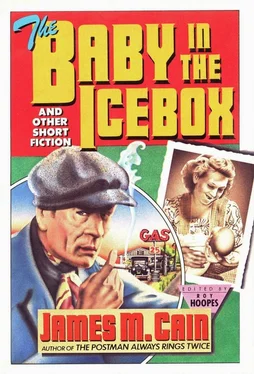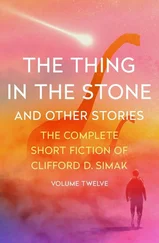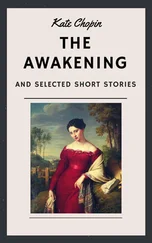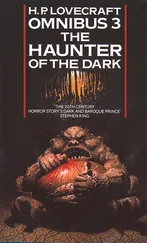Cain’s first contribution to the Mercury was a series of iconoclastic articles attacking some of Mencken’s favorite targets — labor leaders, academicians, editorial writers, do-gooders, and politicians, especially female politicians. Then, in 1925, Cain turned his typewriter loose on county and town commissioners — with a significant change of approach. Instead of ridiculing his subjects in a conventional essay, he satirized them in fictional dialogues, which were, in effect, one-act plays. Many of them have been performed over the years by theater groups.
By 1925 Cain had resigned from St. John’s, spent a summer in a tuberculosis sanitarium, and, at his doctor’s urging, gone to New York in search of a job that would be less strenuous than newspaper reporting. Through an introduction from Mencken, Cain met and impressed Walter Lippmann, then the editorial-page editor for the New York World. Cain spent six years, from late 1924 until early 1931, writing editorials for Lippmann, and in 1928, in an effort to earn more money to help pay for a divorce from his first wife, Mary Clough, Cain started writing a column for the “Metropolitan” section of the Sunday World. Most of his columns consisted of sketches about New Yorkers and, eventually, people on the Eastern Shore — the same kinds of down-home country rubes he ridiculed in his Mercury dialogues.
During this period, Cain also wrote his first two conventional short stories for American Mercury (“Pastorale” and “The Taking of Montfaucon”) as well as articles for the Bookman and the Saturday Evening Post, all of which contributed to his growing reputation as a biting social satirist and master of dialogue. His Mercury pieces were especially popular, and Cain told Mencken that he hoped to write enough of them to eventually make up a collection. When Mencken mentioned this to his friend Alfred A. Knopf, also an early Cain admirer, Knopf urged Cain to contact him first whenever he was ready to do such a book. Cain eventually did write enough sketches, and the result was Our Government, published in 1930, which consisted of most of his Mercury dialogues, the short story “The Taking of Montfaucon,” and four additional dialogues done especially for the book.
Not only did the publication of Our Government further enhance Cain’s reputation, it also helped bring his name to the attention of Hollywood producers. His New York agent, James Geller, obtained offers from a few studios, and soon Geller started pressing Cain to take a job in California. Cain was not interested at first, but then, in 1931, after the World folded and Cain spent nine months at The New Yorker learning, among other things, that he could not get along with Harold Ross, he decided to take his agent’s advice. He went to Hollywood, where Geller found him a $400-a-week job at Paramount Pictures — twice what he was getting at The New Yorker.
Cain’s first assignment at Paramount was to work on a new script for The Ten Commandments. The project ended in failure, and within six months of his arrival in Hollywood, Cain was out of a job in the middle of the Depression, forty years old, and supporting a second wife (a Finn named Elina Tyszecka) and her two young children (Leo and Henrietta). Although broke and discouraged, Cain was sickened by the thought of returning to New York, and going back to a Baltimore paper appealed to him even less. As he wrote Mencken: “I have always disliked Baltimore with a venomous unreasoning dislike that goes beyond anything that can really be said against it. So here I stay for a while.” In Hollywood (“as good a place to find out where I am at as any”) at least the living was cheap.
The Cains moved from their two apartments in Hollywood’s Montecito Hotel to a little house in Burbank, and Cain settled down to try to make a living as a free-lance writer. But whenever he began to think about articles, he became depressed at being in the West, three thousand miles from his usual coordinates, ideas, and sources of information. Then he began to think: “Unconsciously,” he wrote later, “I assumed that the East was the only good seat for the show that started in 1642, and the white man began his reduction of the continent. But actually, if the Atlantic was the starting line of the great trek, the Pacific was the goal, and just as valid a place to study it from as the other side of the country.”
Cain began to study the West, especially California, and decided he had been making false assumptions. “I had supposed the West to be a bit naïve, a bit recent, a bit wild, wooly and absurd. When I examined these facts, however, I found them rather different. Actually the country is the heir to a prodigious, rich, colorful civilization that sprang into being with the first gold strike on the American River in 1848 and, indeed, back years before that, for the life that was led by the Spanish ranchers, to say nothing of the contribution of the Russians, was wholly charming.”
Gradually, as Cain continued his research, he gained more and more respect for the West, an appreciation which would soon work its way into his magazine articles. But first, he wanted to try fiction again, having been encouraged by favorable responses to the two short stories he had written for the Mercury.
Even as early as 1932, one of the principal forms of recreation in California was driving around in an automobile — through the canyons, out into the valleys, or down to the beaches. Cain loved to drive, and he took hundreds of such trips, alone, with Elina and the kids, or with friends. As he drove around in his 1932 Ford roadster, he began to feel more and more that California and its people provided a natural milieu for his writing. And there was one gas station, where he regularly stopped, that provided a spark that would eventually ignite Cain’s phenomenal career as a writer of controversial best-sellers. “Always this bosomy-looking thing comes out — commonplace, but sexy, the kind you have ideas about,” he later told an interviewer. “We always talked while she filled up my tank. One day I read in the paper where a woman who runs a filling station knocked off her husband. Can it be this bosomy thing? I go by and sure enough the place is closed. I inquire. Yes, she’s the one — this appetizing but utterly commonplace woman.”
He began to think: What about a novel in which a woman and a typical California automobile tramp kill the woman’s husband to get his gas station and car? Cain and Elina discussed the idea for months, but he was still not ready for a long story. At the same time, he only felt comfortable in his writing when he pretended to be someone else, telling his story in the first person, in the manner of Ring Lardner. He preferred to write about Eastern Shore rubes who spoke the dialect of the common man, and was most comfortable when he could pretend to be one of them.
Although critics later would say that James M. Cain was a disciple of the “Hemingway school,” the two men who had the greatest impact on the development of his literary style were Ike Newton and Ring Lardner. Newton was a bricklayer who had put a walk on the campus of Washington College while twelve-year-old Jamie Cain sat fascinated for hours, listening to Newton talk. “Later,” Cain wrote, “my dialogue would be praised off and on by critics, and I would save myself argument by acknowledging debts to various experts on the ‘vulgate,’ as H. L. Mencken called it. But actually, if a writer owes a debt to what his ears pick up, mine would be to Ike.”
Cain had become a fan of Ring Lardner just before World War I, when Lardner’s stories about a fictional baseball player named Jack Keefe were appearing in the Saturday Evening Post. In France, Cain wrote letters to his brother, Boydie, a young Marine pilot destined to die in a tragic accident after the Armistice. In these letters, Cain imitated Lardner’s style, and he later said it was the “only time I consciously imitated anybody.” Lardner obviously had an impact on his early dialogues and short stories written for the World and Mercury, but as Cain found out when he tried to write his novel in 1922, the colloquial dialect invariably became tedious in a long story.
Читать дальше











